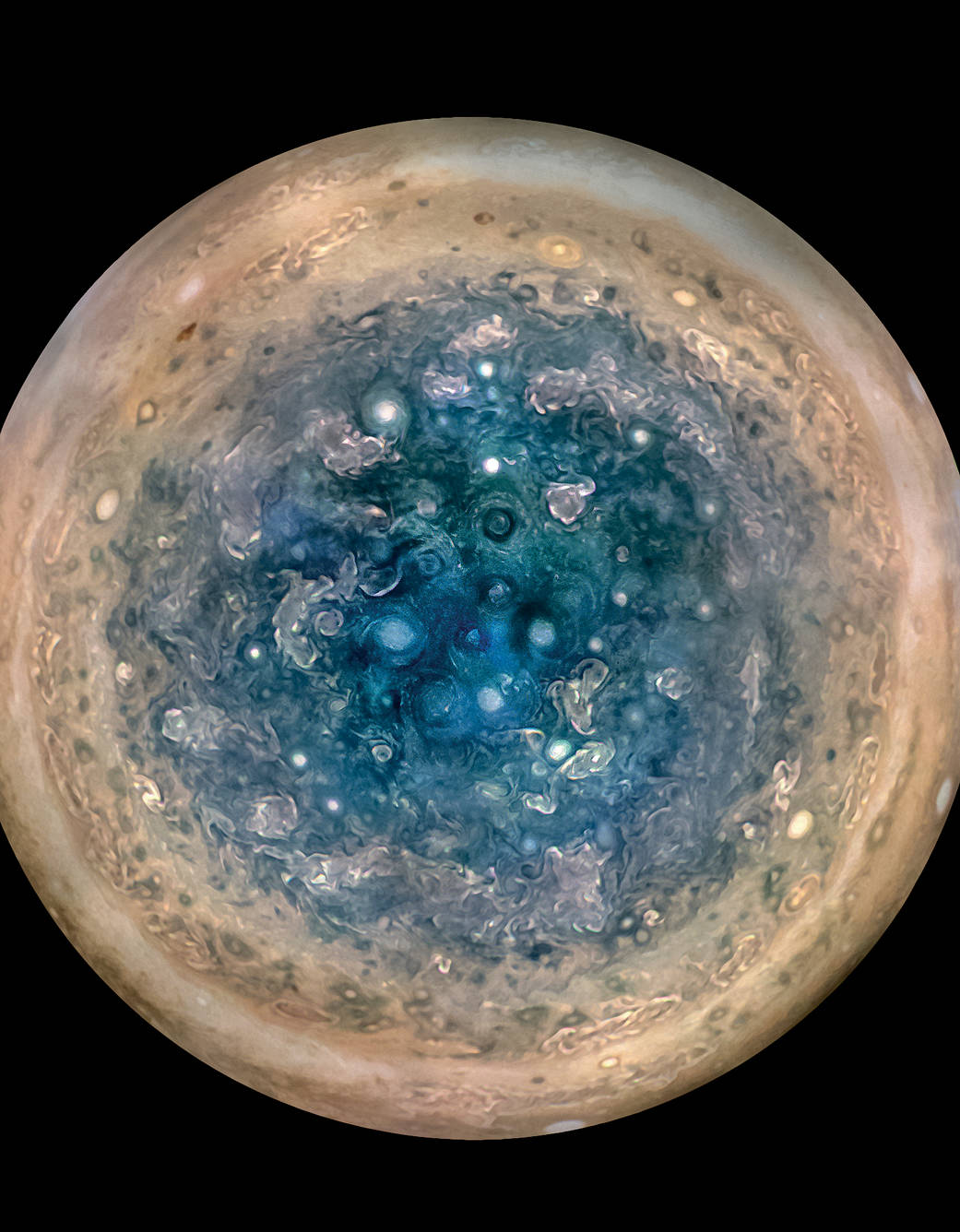'Totally Wrong' on Jupiter: What Scientists Gleaned from NASA's Juno Mission

NATIONAL HARBOR, Md. — Before NASA sent its Juno spacecraft to explore Jupiter, astronomers were "totally wrong" about much of what they thought they knew about the planet, the mission's principal investigator, Scott Bolton, said during a lecture here at the 231st meeting of the American Astronomical Society on Tuesday (Jan. 9).
Juno, which launched in 2011 and is currently orbiting Jupiter, is not the first spacecraft to study the gas giant up close. NASA's Pioneer and Voyager missions flew by Jupiter in the 1970s, and the Galileo spacecraft later spent eight years orbiting the planet. Even before that, humans had been studying Jupiter with telescopes for hundreds of years.
By the time Juno launched, astronomers had a pretty good idea of what to expect from the new images and data it would collect at Jupiter — or so they thought. [Photos: NASA's Juno Mission to Jupiter]
"Our ideas were totally wrong about the interior structure, about the atmosphere, [and] even about the magnetosphere," Bolton said. Astronomers believed that Jupiter had either a very small and dense core, or perhaps no core at all. But data from Juno revealed that Jupiter has an enormous, "fuzzy" core that might be partially dissolved. This discrepancy between scientists' expectations and the data suggests that there's a lot we still don't know about giant gas planets, he explained.
During its first few close encounters with Jupiter, the spacecraft revealed strange clusters of cyclones raging around Jupiter's north and south poles. Juno is the first space mission to get a good look at the poles, and the mission's scientists did not expect them to look as weird and chaotic as they do, Bolton said. "Had someone shown me a picture of just the pole 10 years ago, I never would have guessed it was Jupiter."
Measurements of Jupiter's magnetic field yielded more surprises. Astronomers knew that Jupiter has the strongest magnetic field of all the planets in the solar system, but Juno found that the magnetic field is actually twice as strong as was previously thought. Much like Earth's magnetic field, Jupiter's magnetic field funnels charged particles (mostly electrons) toward the planet's magnetic poles, where the particles interact with atoms in the atmosphere to create bright auroras.
Strangely, auroras on Jupiter seem to be powered by a mysterious physical force that astronomers haven't been able to identify. According to the mathematical calculations, Jupiter's auroras should be about 10 to 30 times more energetic than Earth's, but Juno has seen auroras that are hundreds of times stronger for no apparent reason. And to make things even weirder, Jupiter's auroras seem to turn off at night as the poles rotate into the dark. This means that Jupiter's northern and southern lights behave differently at each pole, unlike the auroras on Earth.
Get the Space.com Newsletter
Breaking space news, the latest updates on rocket launches, skywatching events and more!
While scientists and astronomers have been scratching their heads over all these new groundbreaking discoveries enabled by the Juno spacecraft, the photographs Juno has taken of Jupiter have been similarly mind-boggling, Bolton said. Juno's raw images, taken by the spacecraft's JunoCam, are available online for citizen-scientists to download and process, and people have helped to create the most amazing images of Jupiter the world has ever seen. "I'm not sure that anybody on my team was ready for Jupiter to look like that," Bolton said. "We were just startled."
As Juno continues its mission exploring Jupiter and its moons, mission scientists will be looking for new explanations for the strange new things they have learned about Jupiter. And just as the mission will attempt to shed light on these unsolved mysteries, it may very well uncover more ways in which astronomers have been wrong about Jupiter. Bolton ended his lecture with a message to grad students: "Keep working on the theories. Don't believe your professors."
Email Hanneke Weitering at hweitering@space.com or follow her @hannekescience. Follow us @Spacedotcom, Facebook and Google+. Original article on Space.com.
Join our Space Forums to keep talking space on the latest missions, night sky and more! And if you have a news tip, correction or comment, let us know at: community@space.com.

Hanneke Weitering is a multimedia journalist in the Pacific Northwest reporting on the future of aviation at FutureFlight.aero and Aviation International News and was previously the Editor for Spaceflight and Astronomy news here at Space.com. As an editor with over 10 years of experience in science journalism she has previously written for Scholastic Classroom Magazines, MedPage Today and The Joint Institute for Computational Sciences at Oak Ridge National Laboratory. After studying physics at the University of Tennessee in her hometown of Knoxville, she earned her graduate degree in Science, Health and Environmental Reporting (SHERP) from New York University. Hanneke joined the Space.com team in 2016 as a staff writer and producer, covering topics including spaceflight and astronomy. She currently lives in Seattle, home of the Space Needle, with her cat and two snakes. In her spare time, Hanneke enjoys exploring the Rocky Mountains, basking in nature and looking for dark skies to gaze at the cosmos.









